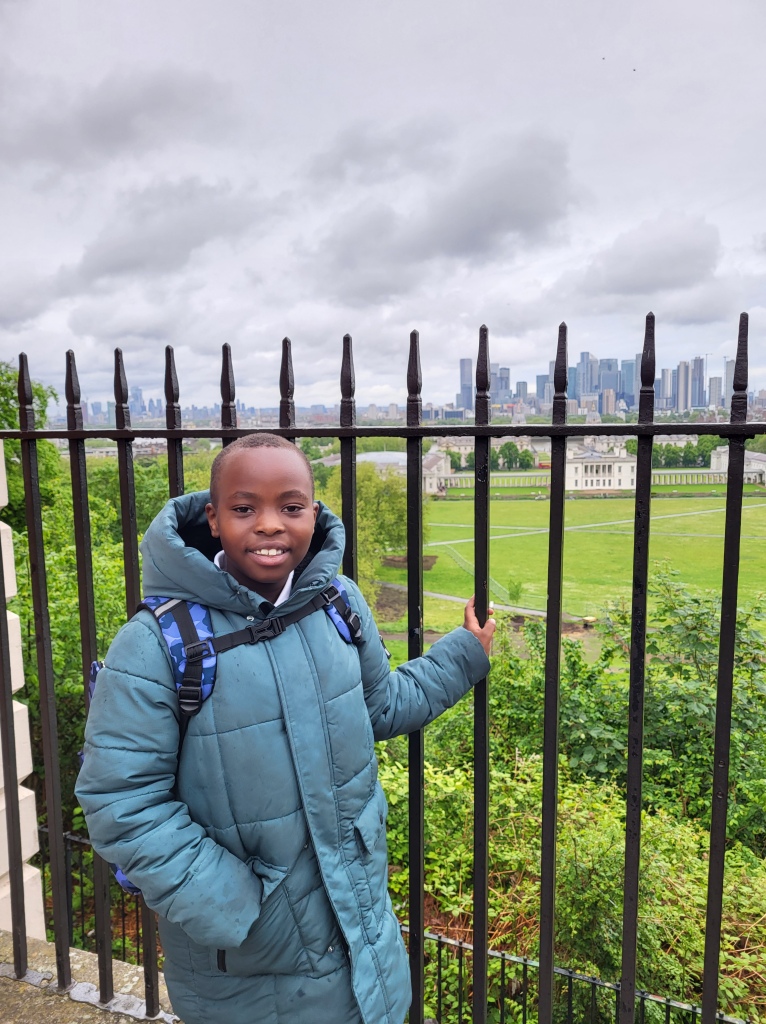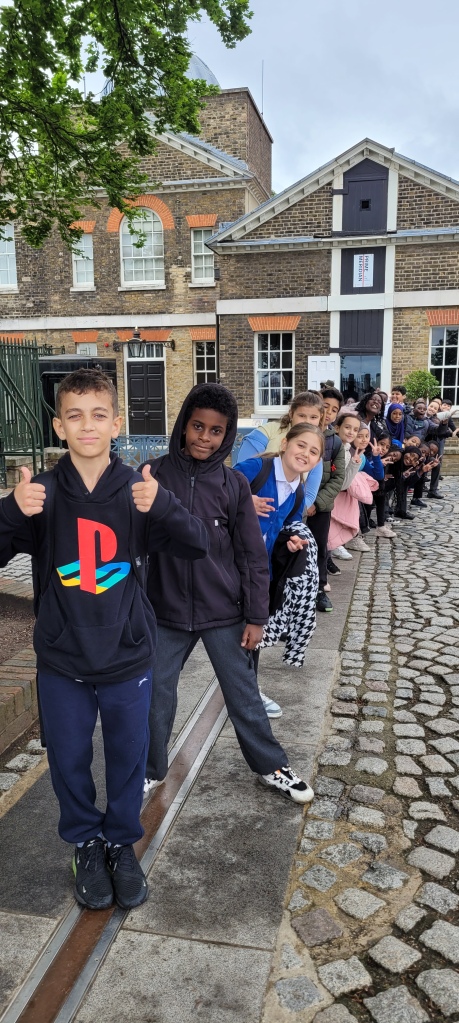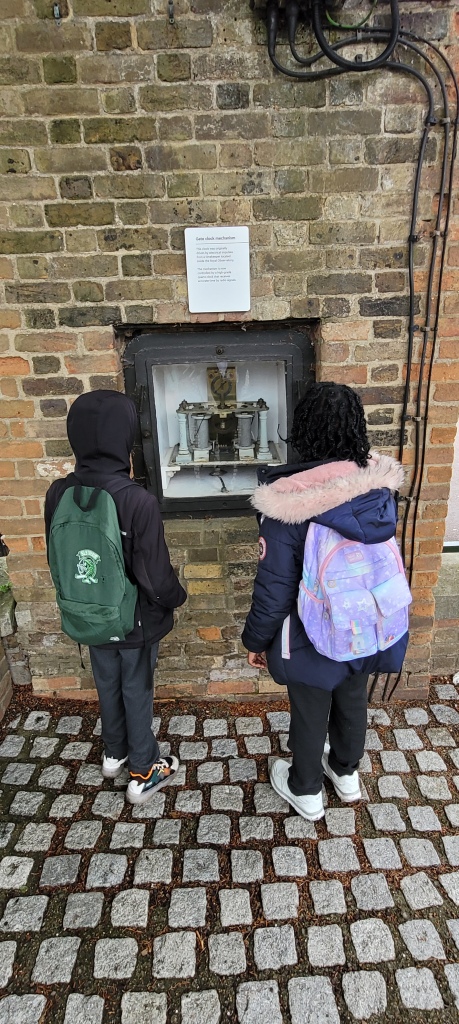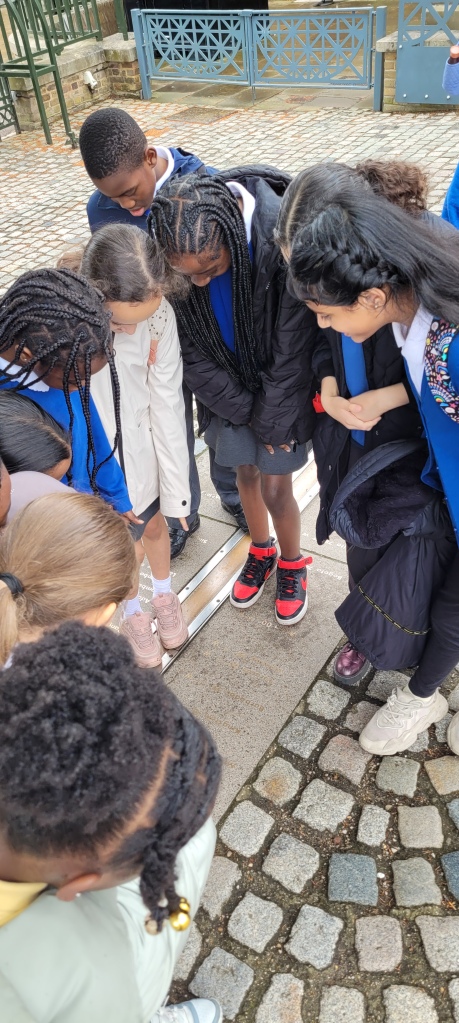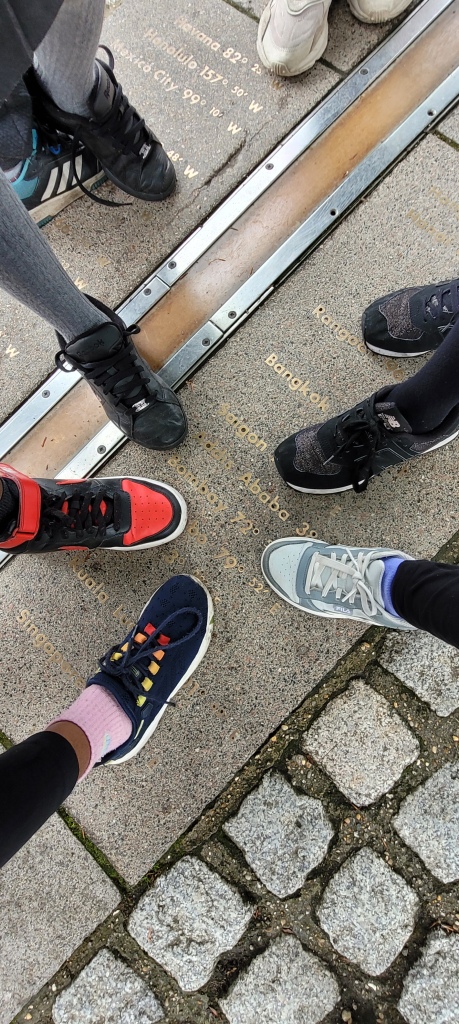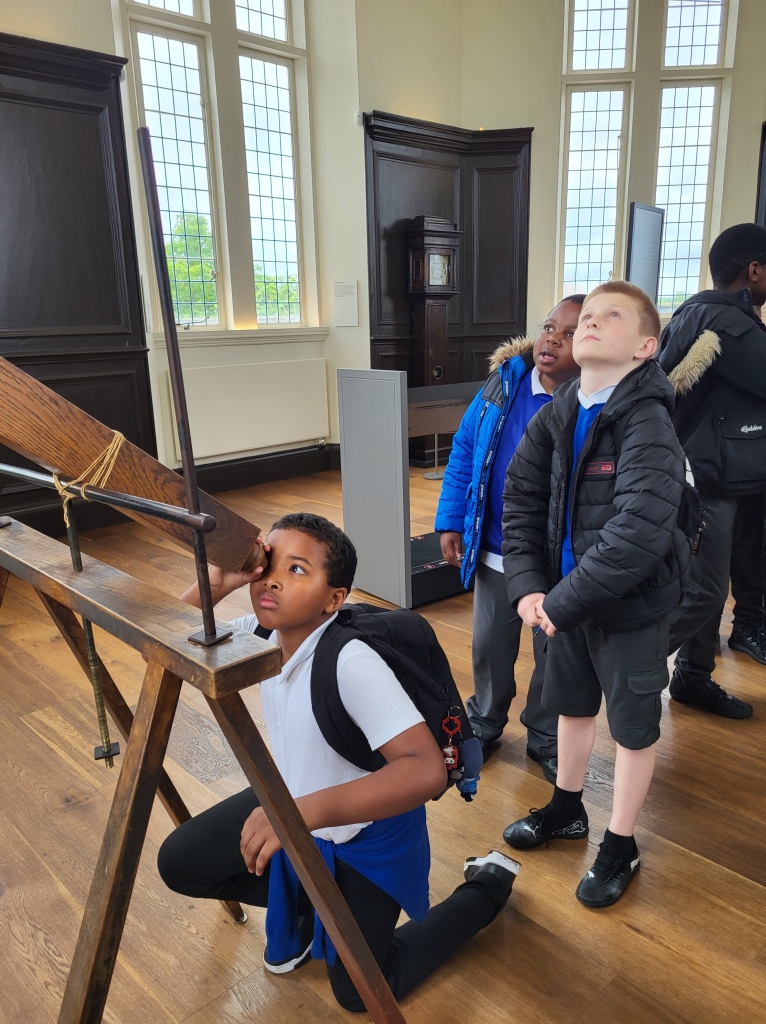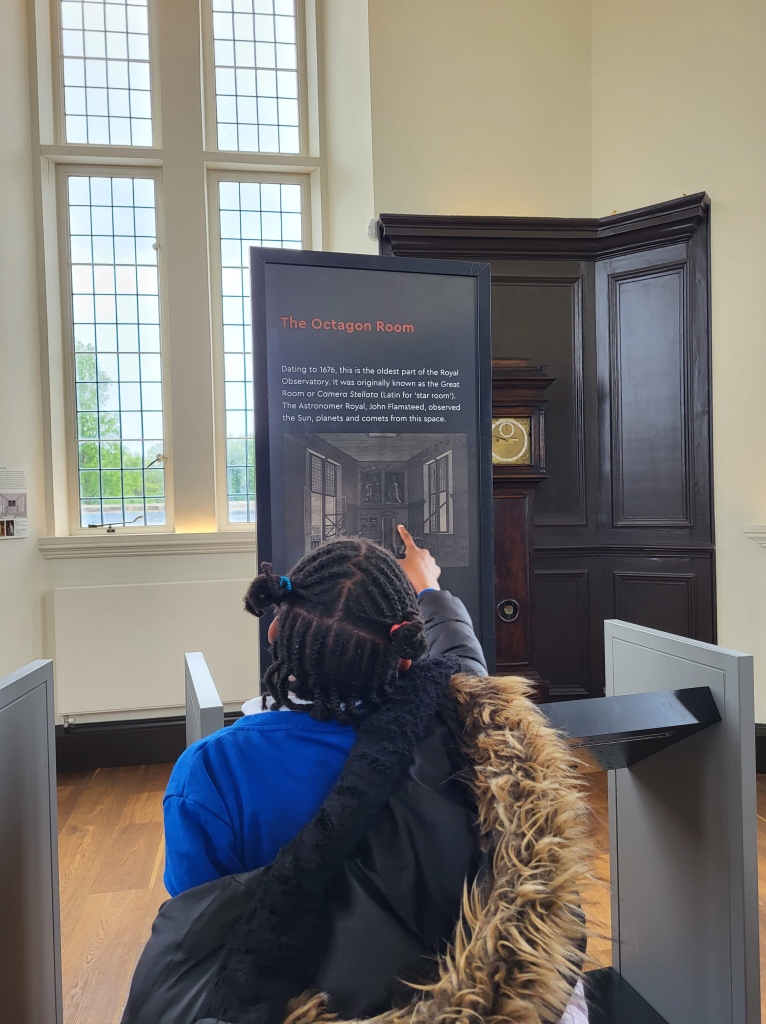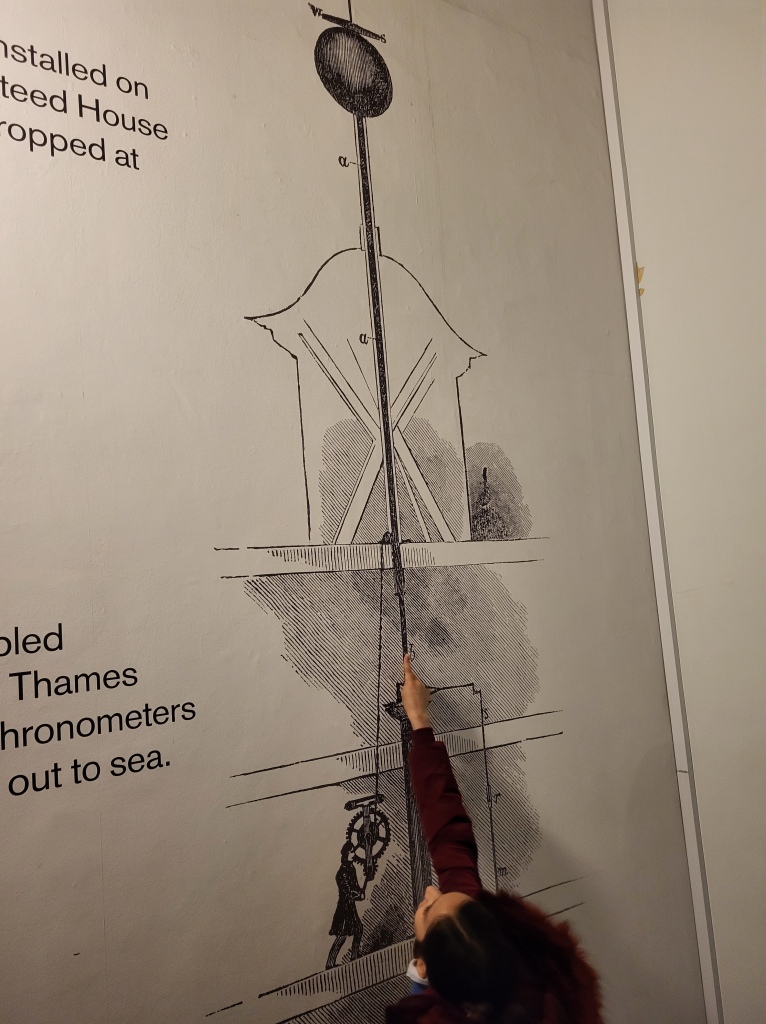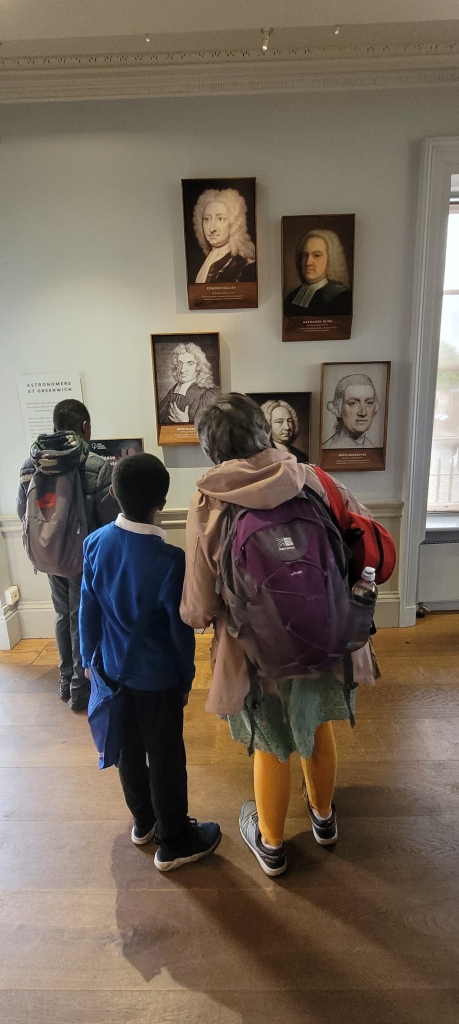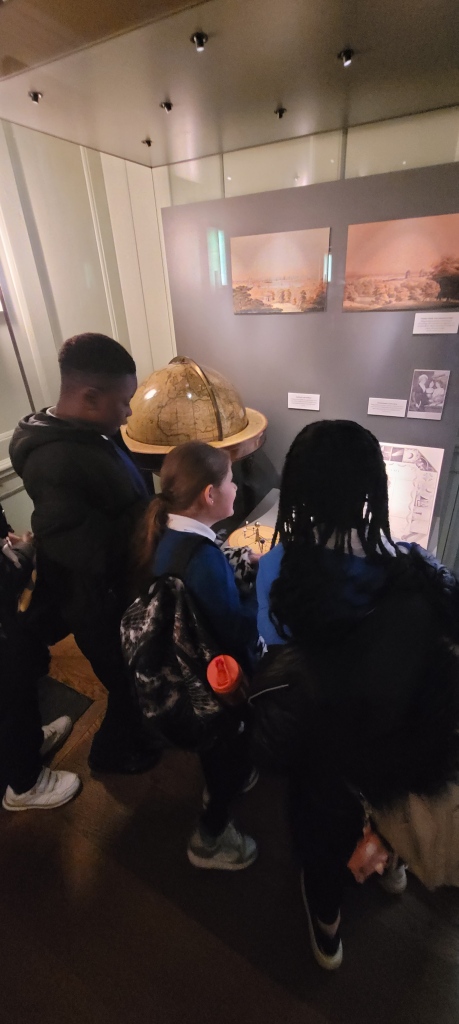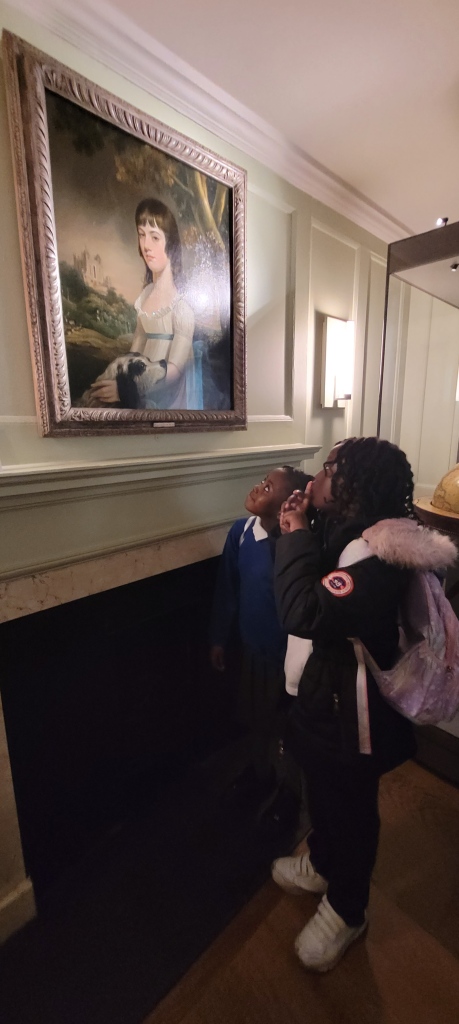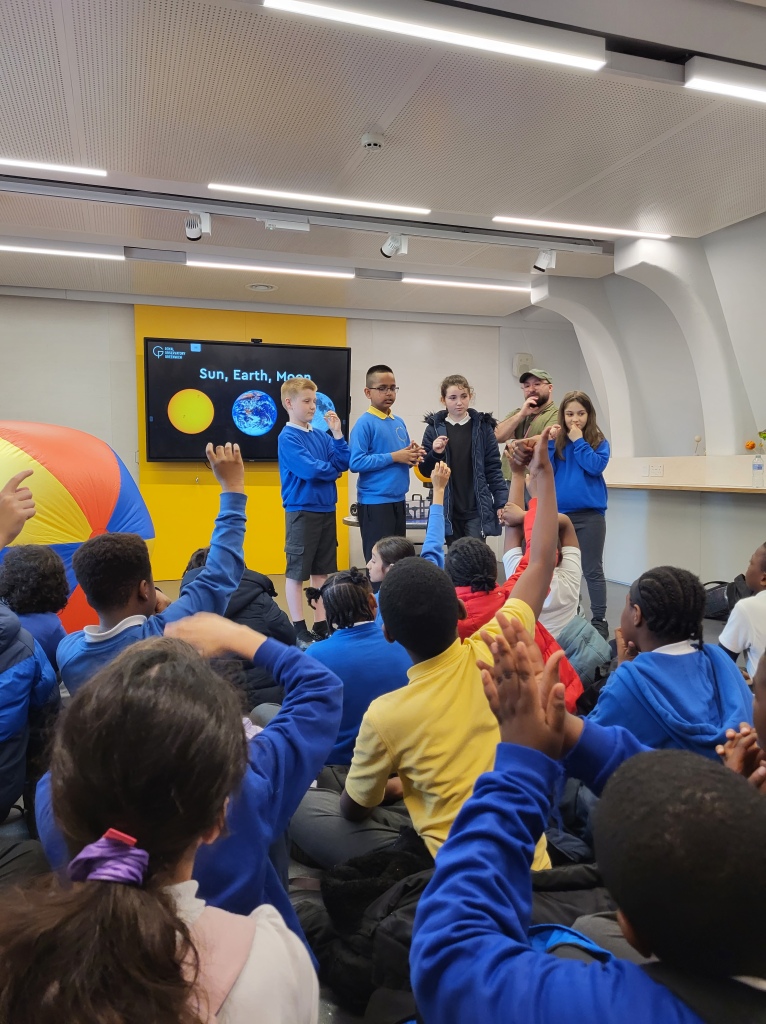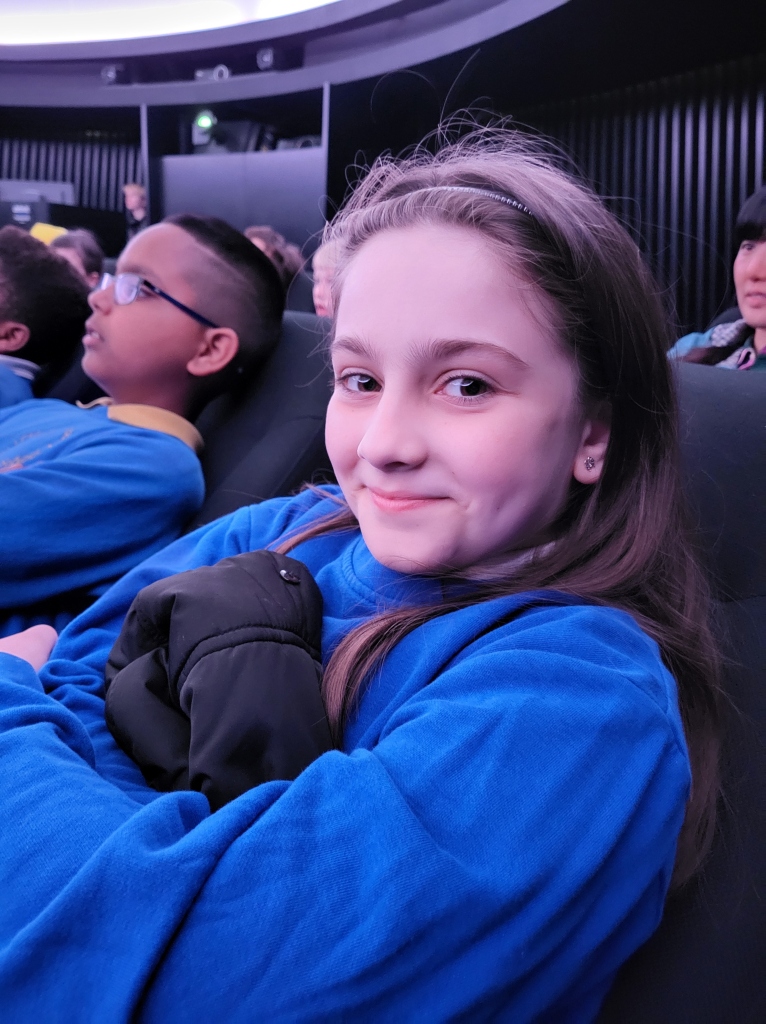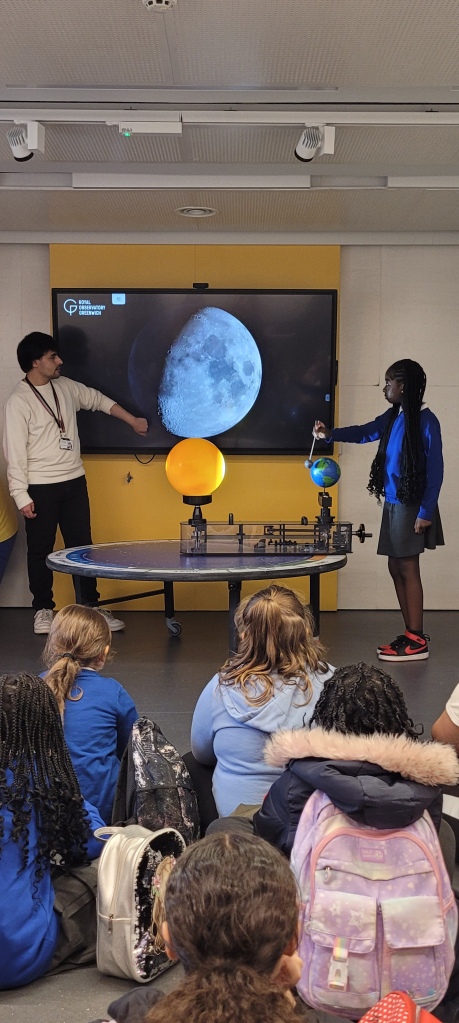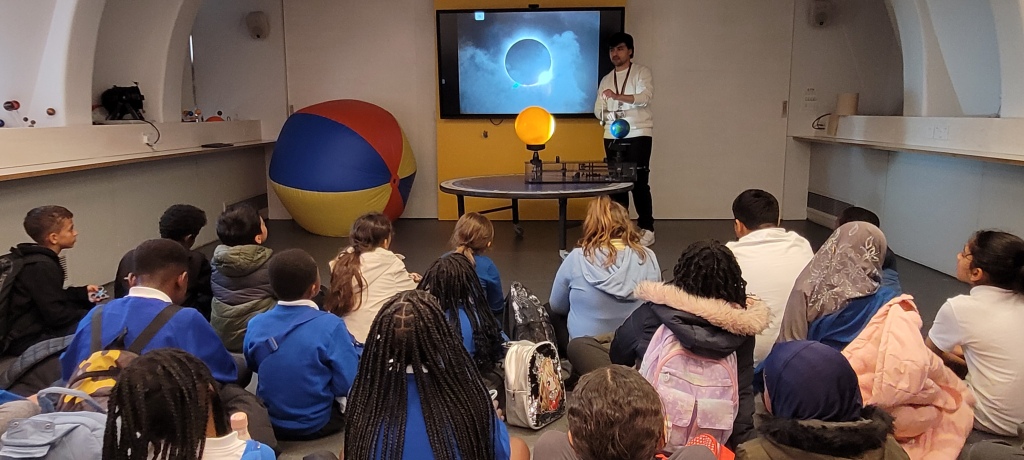Year 5 visited the Royal Observatory last week as part of our Science topic on Space, which we learnt about during the Spring term. It had been a while since we’d looked at the topic so it was great to re-visit everything we had learnt, as well as ask the experts lots of questions to expand our knowledge. We blew away Jen and Lucy with how much we knew about the planets and our solar system, and stumped the experts at the Observatory with some of our questions!
At the Observatory we got the chance to stand on the Prime Meridian line, which represents the historic Prime Meridian of the World dividing the eastern and western hemispheres of the Earth. If you stand with one foot on one side and the other on the left, you are perfectly in the middle of east and west! Since the late 19th century, the Prime Meridian at Greenwich has served as the reference line for Greenwich Mean Time, or GMT. We also had a look around Flamsteed House, where the Astronomers Royal lived and worked, and got to look at different scientific instruments that astronomers of the past used to study the stars and planets.
Afterwards, we had the spectacular experience of getting up close and personal with the stars in a planetarium show led by an expert astronomer in the Peter Harrison Planetarium. It felt like the stars were close enough to touch! We got the chance to ask Jake the astronomer some questions after the show, like how the rocky and gas planets in our solar system formed after the big bang, and what was the mass of the sun.
Next, we did a self-guided activity on the formation of our solar system, where we completed a crossword with some tricky scientific terminology and made a comic strip – good thing we asked Jake those questions beforehand!
Finally, we had a workshop with Andy the astronomer and learnt about the Sun, Earth and Moon. We wowed Andy with all or prior knowledge from when we learnt about Space in Spring 2, and felt like expert astronomers ourselves! We got the chance to use a moving model that showed the Earth’s orbit around the Sun – which is 365.25 days for a full orbit, the Earth’s rotation on it’s axis – which gives us night and day and the four seasons, and the Moon’s orbit around the Earth – which is 29 days for a full lunar cycle.
Overall it was an absolutely amazing day – many of us believe it was our favourite trip of Year 5!
